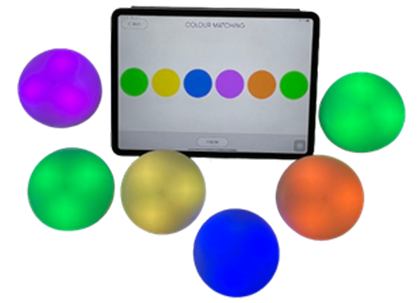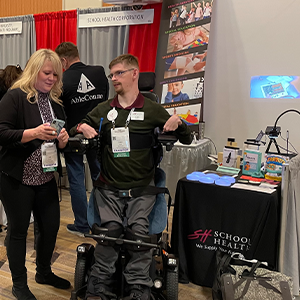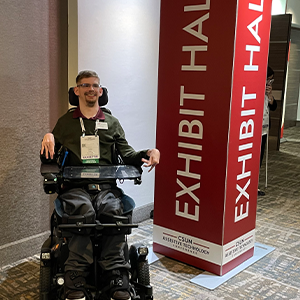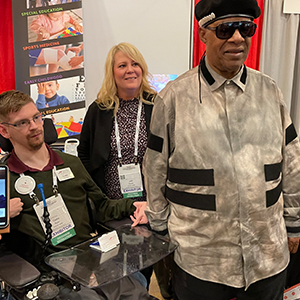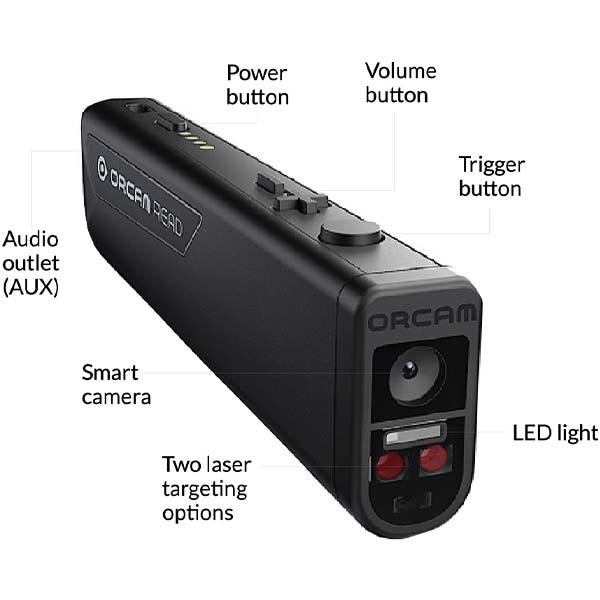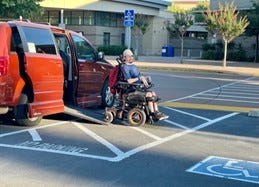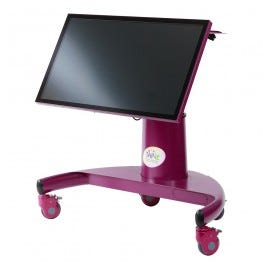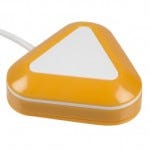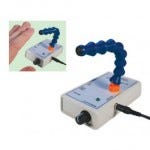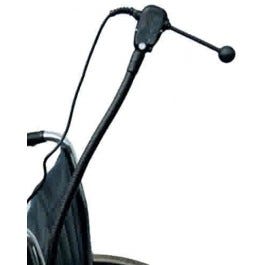Understanding the New Federal Guidelines for the End of ESSER III
- By Dr. Raymond Heipp
- Feb 12, 2024
- 0 Comments


Several things happened at the end of January that helped bring clarity to the assistive technology landscape. Annually, the end of January brings us to the ATIA Conference in Orlando. This conference is a great opportunity to learn about the latest technology and the prevalent application of these from our colleagues across the country. We will get to the highlights of that towards the end of this piece. The bigger news was the fact that the U.S. Department of Education, in a document dated January 22nd, spelled out guidelines for the use of assistive technology as well as presented another document that addressed myth vs. fact looks at perceptions in education. Both can be found on our website. For those of you who have not had the opportunity to read the document, here is a synopsis of what it states, as well as some thoughts as to how you can proceed over the next few months with the end of ESSER III funding coming September 30th, 2024.
The first two myth vs. fact statements focus on the IEP and the need for AT. Assistive Technology should be a consideration in every IEP meeting, not just certain ones based on conditions. That does not mean that every child qualifies for AT. Instead, it is through the work of assessment during the IEP process whether there is a need. Stemming from that, recommended AT must be provided by the district or LEA under the guidelines of FAPE and cannot be dismissed by saying the funding is not available. What this means is that a quick assessment of tools which any district may be lacking could be conducted now so that while ESSER III funding is still open, districts can fill the gap of having AT devices for trial and/or usage by students. This is a perfect time to review what your district already has and create training for those devices with the teachers and therapists in the field.
The next two statements focus on the idea of AT devices and services. Simply providing a student an assistive technology device does not mean that other services need not be provided. I think that most of us recognize that AT is the tool and what we can do with therapies and life skills add focus to the assistance of these individuals. It is nice to see this clarified for those outside of the Special Education realm to aid in the understanding that there is no “one-size-fits-all” device or approach that is available. The second part of that duo focuses on the AT evaluation. IDEA does not require a formal evaluation for each piece of AT before it can be implemented. I know some of our AT Specialists have a large caseload of evaluations that they are attempting to conduct. Other districts have enlisted third party groups to conduct these evaluations as well. In many cases, an AT evaluation qualifies what an individual needs. This statement refers more to the situations where the AT device that might be able to support that student is obvious. Therefore, the need to wait for an evaluation before implementation can be eliminated. If we know what will work, let us get that student paired with the device and not delay or cause other frustrations.
We then move to the fact that training must be a part of any AT implementation. Students do not have to learn these devices on their own. Keep in mind, we need to make sure that teachers and therapists are given training, so that they might be even better equipped to support the students. Reach out to the groups with whom you work to see what kind of training they can provide you. This training can be virtual or video presentations with time for questions at a later point after the support team has practiced with the devices.
The next two statements have been created for those outside of our community. They refer to the fact that any recommended assistive technology must be included in the IEP and formally reviewed and included in transition planning. I know that some districts prefer not to put specific manufacturers down in the IEPs when discussing AT, and that is fine. However, the definition of those products, e.g., a reading pen that does not need the internet and can be connected to earbuds, should be listed. Transitioning from elementary or middle schools into the secondary setting should also include these definitions and how the devices are best utilized for the next group of teachers.
Another statement addresses the usage of assistive technology with state-mandated assessments, and I am so grateful for this addition! AT is approved for these assessments if it is a part of the individual’s IEP and the way that they learn daily. The use of AT is NOT an unfair advantage or prohibitive for students who do not need it. AT is NOT cheating! With that in mind, districts do want to look at devices like reader pens and speech-to-text software while the ESSER III funds are available. Certain reader pens are also incredibly efficient for our ELL population and can help them to understand the questions in a manner that allows them to best answer like they do for our students with reading issues or dyslexia.
The next two statements address how AT is viewed. First AT is not simply technology that is high tech. AT in both mid-tech (speaking calculator, digital recorder, single message communicator, etc.) or low-tech (one of my favorite tools – pencil grips, communication boards, etc.), are by their definition AT and must be addressed. In that same thought, AT is also not for any specific condition or conditions. The DOE reminds us that assistive technology can be incorporated into the IEP of any student if it provides the support that the individual needs to succeed.
As we look at the next statements, we have defined for us that AT is for ALL environments and not just the classroom, must be individualized, and it cannot be assumed that a device which works for someone will work the same way for others. They then go on to spell out succinctly that AT is NOT the same as accessible technology. Nor are AT, UDL, and AEM all “the same thing.” They state that the purpose for each is different, and all should be reviewed considering each individual. There are many of us who have had to fight through situations where those from the outside were content to have something that was “good enough” recommended – often because it was cheaper. No more of that!
The next few statements look at the individual’s usage of the AT. We have heard from the outside that AT lowers motivation for students to learn and lets them get away with having to do the work. That is a myth, as the research has shown that student motivation improves when the AT assists them in sharing their knowledge and abilities. The next two statements look at a child who does not want to use the recommended AT or uses their own devices. The facts around these are that the district still needs to support the students and encourage them to use the devices that will help. Those students who are hesitant to use a device may simply be trying to fit in with their peers. That is another good reason to utilize the ESSER III funds for products like reader pens, unobtrusive switches, or simple communication devices to reduce some of the stigma of using these that students may be feeling. Training for everyone is also essential here.
The final set of myth and fact statements review the deployment of assistive technology. It is the decision of the IEP what technology should be employed, and then someone from that team can work with the district IT team to make sure it is implemented properly. Another statement focuses on how much time it takes to procure the devices. You always want to check with your provider on this as some devices may be experiencing production delays. The good news is that most devices like those by AbleNet, Enabling Devices, software companies like Widgit and ProStudy, and Cosmo, are in stock and can be shipped quickly in 30 days or less. Work with groups you can trust. Please be wary of companies like Amazon. I use Amazon for a lot of my purchases today for personal use. However, working with companies like School Health and Jodi Szuter will provide you with the confidence and support that you are getting the products you need that will help the team, as well as the individual.
The final part of this document focuses on infants and toddlers. AT, which includes items like helmets, cushions, and adapted seating are covered under the auspices of IDEA-C. This has been a contention with some of our Head Start/Early Head Start programs, as well as other specialized programs within some of our districts. The AT needs of these students, including AAC, are supported. Feel free to look at the documents from the government as we have also posted those.
ATIA was one of the best ones I have attended since pre-COVID days. The discussions were deeper, and the excitement of sharing ideas was palpable. There was focus as well on the sensory side of education. Hillary Goldthwait-Fowles and Jennifer Edge-Savage had a phenomenal session on sensory supports for everyone and people came out of it energized. The one caution I have from the conference is with some of the “new” technologies. Many of the groups who were there had long-established technologies with new models or great updates. Those are the technologies which are evidence-based and make a difference. I always worry about some of these newer technologies which have no direct research. Please do your homework and work with people you can trust for insights into what will best support you and your students’ needs.
As always, if you do have any questions, please feel free to reach out to me at rheipp@schoolhealth.com.


